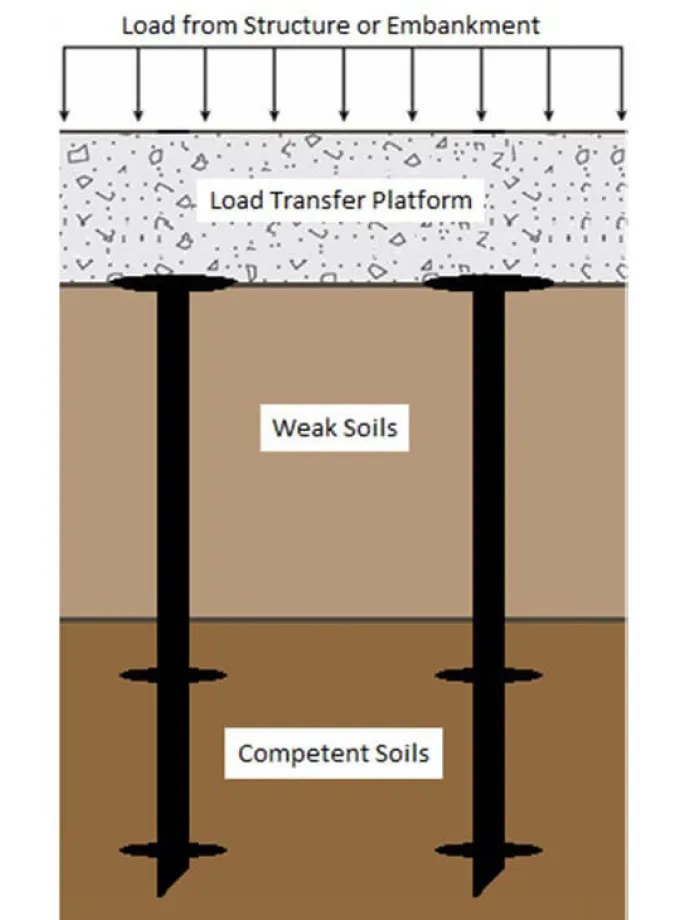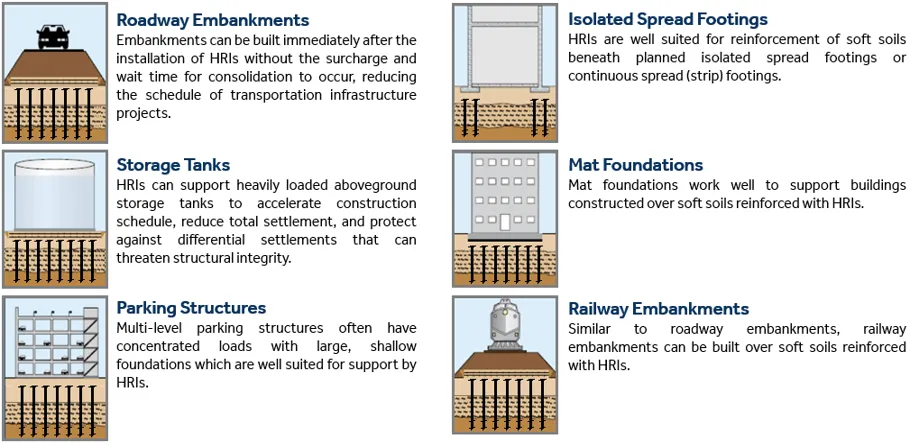Often cost-effective when compared to piling or other traditional ground improvement techniques, our patented helical rigid inclusion ground improvement system controls settlement of shallow foundations by transferring a majority of the loads through weak, compressible strata to a firm bearing layer below.

Common uses
Process
Our engineers will design the helical rigid inclusion (HRI) specific to the soil conditions, loads, and settlement criteria of the project.
Traditional stone column or rigid inclusion methods are often technically challenging to execute, requiring highly-expertised crews and specialized machinery. As well, they are labor and equipment intensive and that large machinery typically leads to more elaborate working platform requirements, as a result they are often more costly and time consuming, and can be prone to quality or performance issues.
Helical Rigid Inclusions are screwed into the soil to the predetermined (design) bearing strata by rotating the steel shafts with the torque motor attached to a common excavator/rig. With smaller equipment, reduced manhours and installation rates of over 2000 linear feet per day, HRIs can reduce your costs and schedule.
When required, multiple steel HRI sections are spliced via bolted connections and sections are added to complete the total embedment depth. A detailed understanding of the subsurface conditions – especially soil strata types, elevations and strengths or densities – is necessary to properly interpret the required design and torque capacities.
On completion, the top of the HRI is incorporated into the Load Transfer Platform (LTP) via the inclusion cap plate. The HRI spacing and load resistance, the LTP, and the inclusion cap are all configured in the manner which the best suited for the project’s unique situation and performance (settlement) requirements. Torque is monitored during every HRI’s installation to ensure predictable and consistent settlement and load capacity.
